TwoStep: A new way to move
This passion project was prompted by the many headlines I had been seeing about the burgeoning elderly population. I wanted to design something that could make their lives better. After interviewing several occupational therapists and a number of seniors, I came to the conclusion that the biggest impact I could create was in mobility. As one therapist noted, “if you can’t move, you really can’t be independent at home.”
One story, two sides
Surprisingly, most seniors said they loved their walker; it was essential to their daily life. But I heard a different story from family members and therapists: in their opinion, the walker was actually the problem.
Primary User: Injury Recovery
Mobility is increasing
“I love my walker!”
Secondary User: Chronic Condition
Mobility is declining
“I couldn’t live without it!”
Family Member
His grandpa uses a walker for a chronic condition.
“My family thinks the walker actually made it worse.”
Physical Therapist
20+ years working with seniors
“Most of my patients struggle to graduate from a walker.”
how can we help users cross the mobility gap?
I identified a gap in the injury recovery process: eventually, seniors get too much support from a walker, but they aren’t ready yet for a cane. To help users cross this gap, I needed to design something that gave less support than a walker, but more support than a cane.
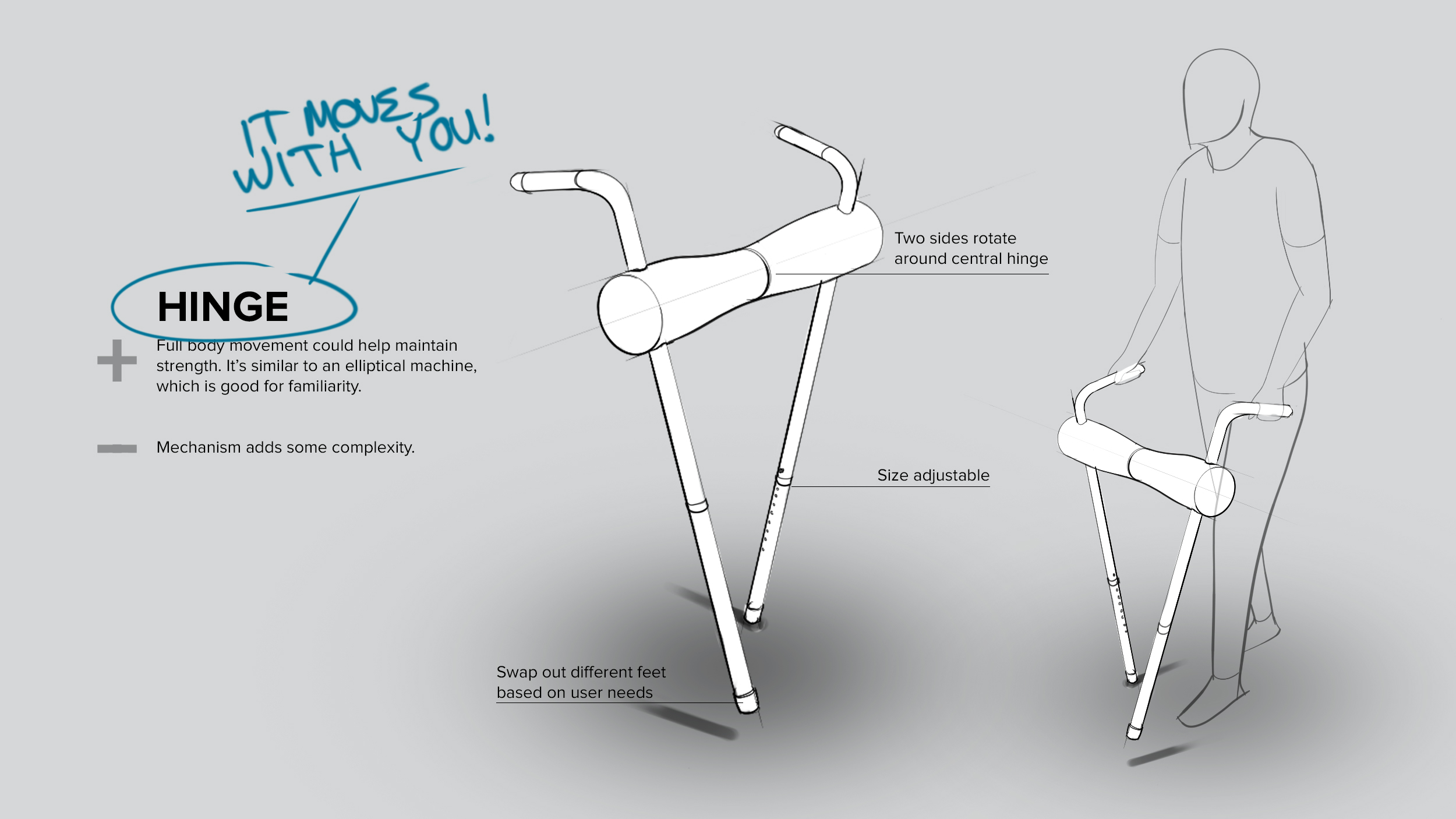
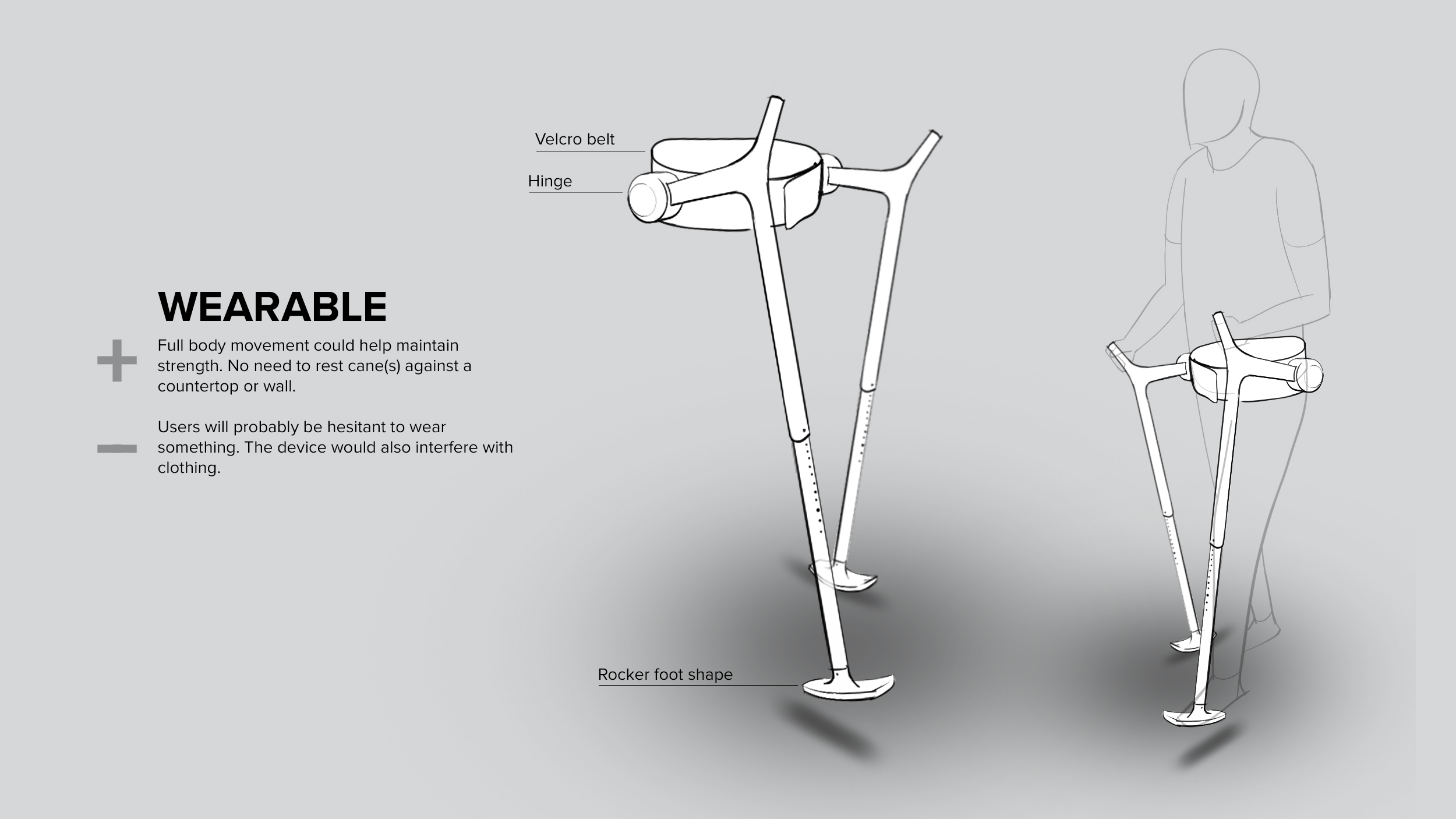
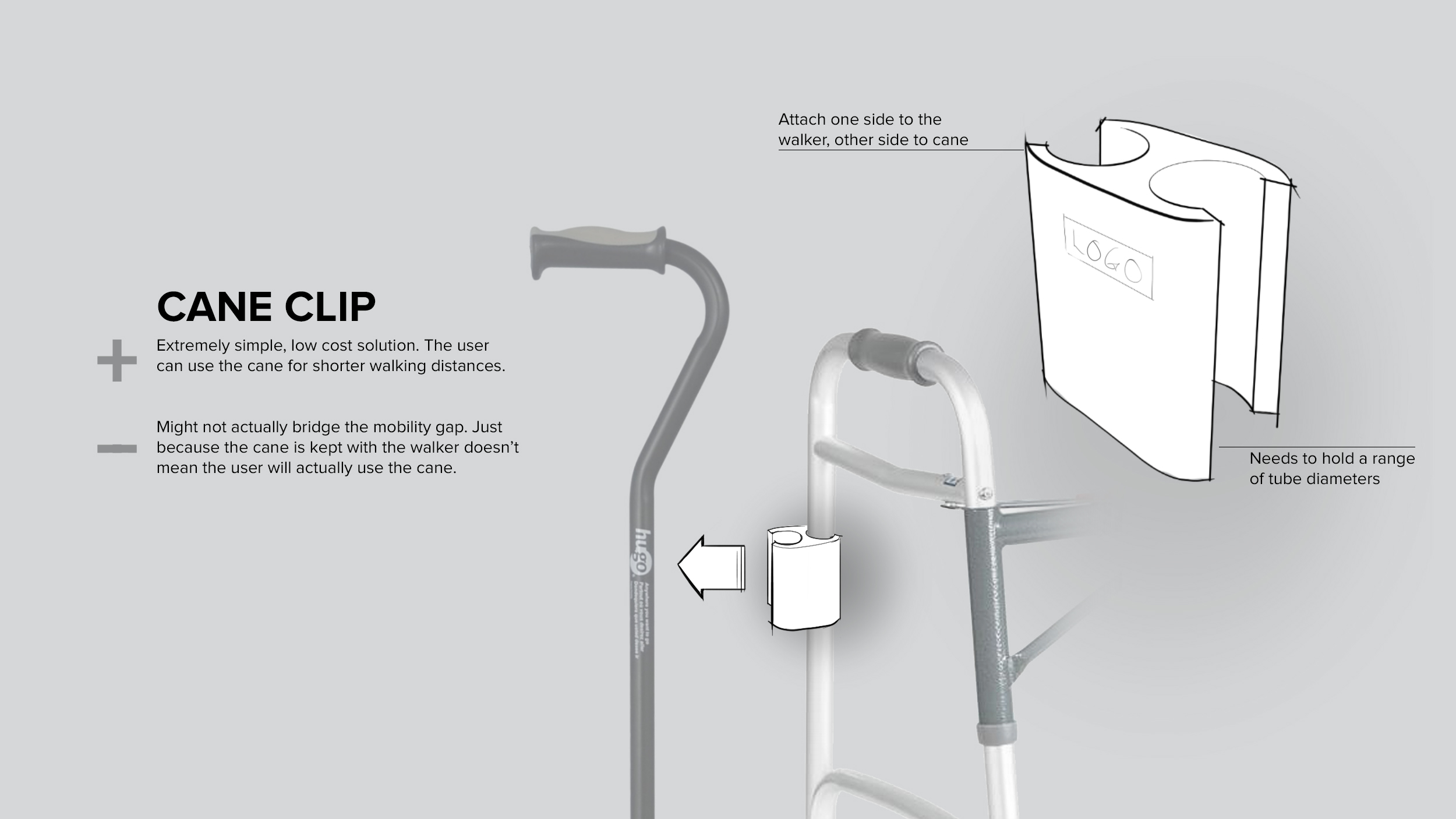
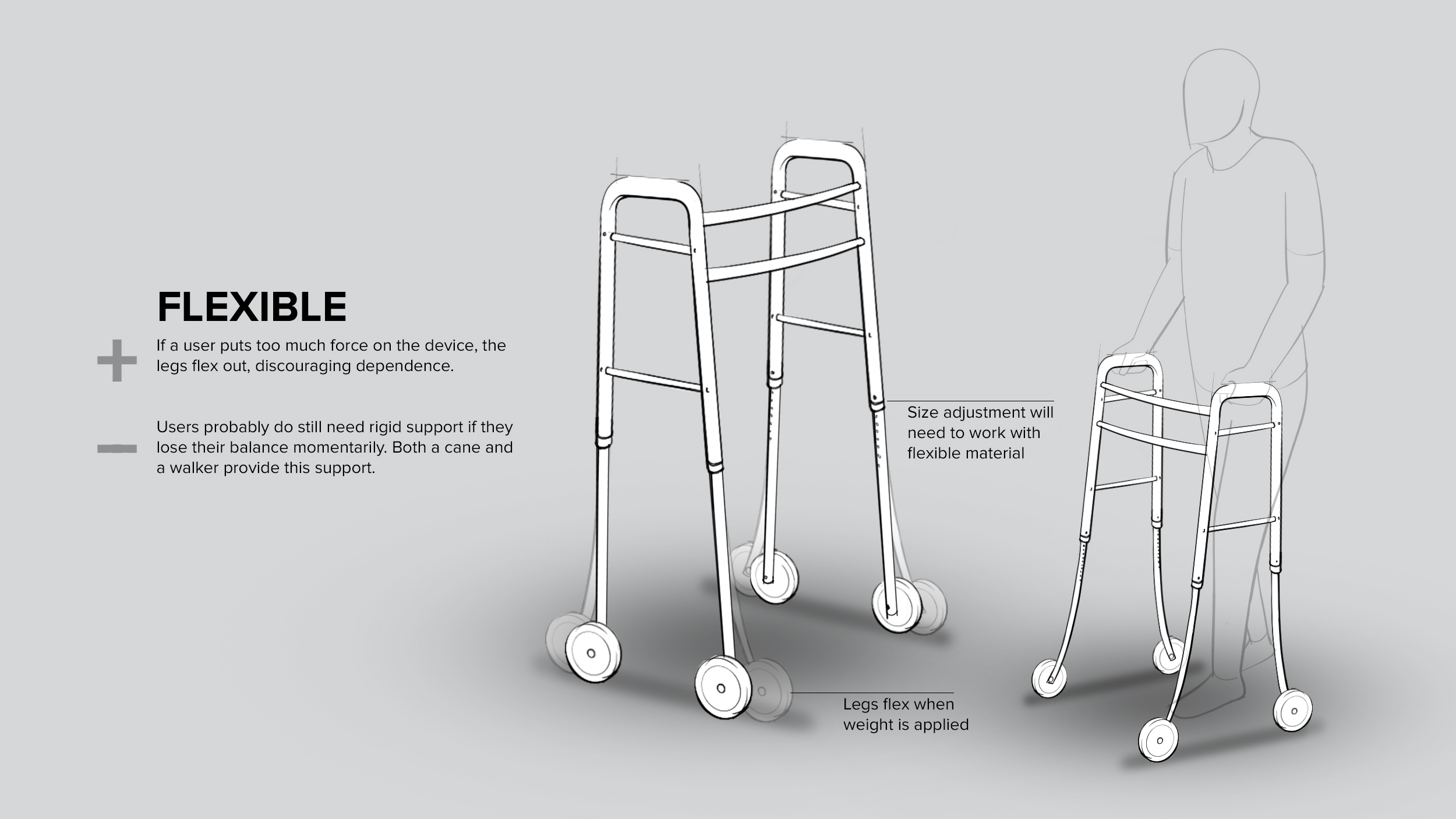
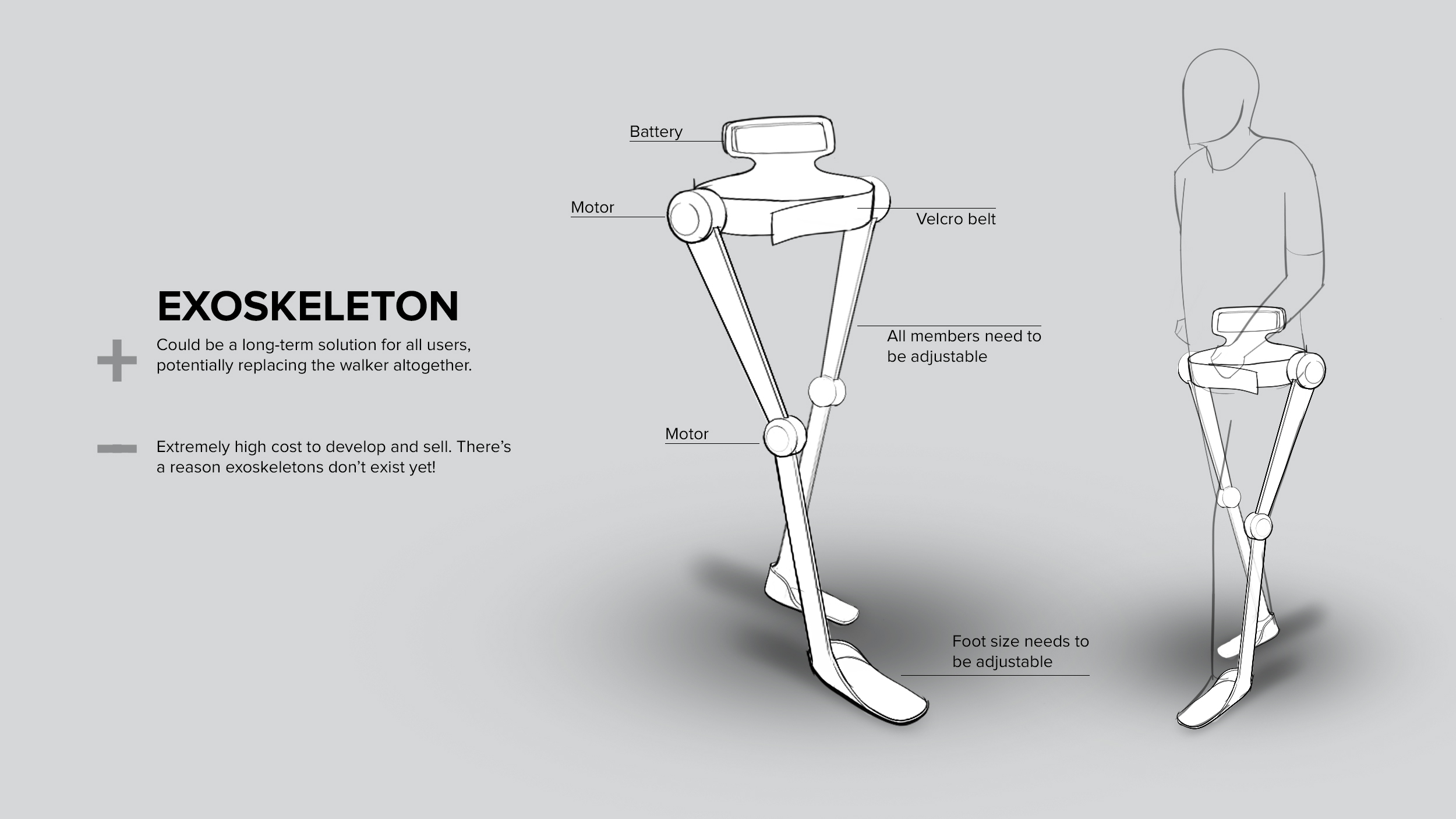
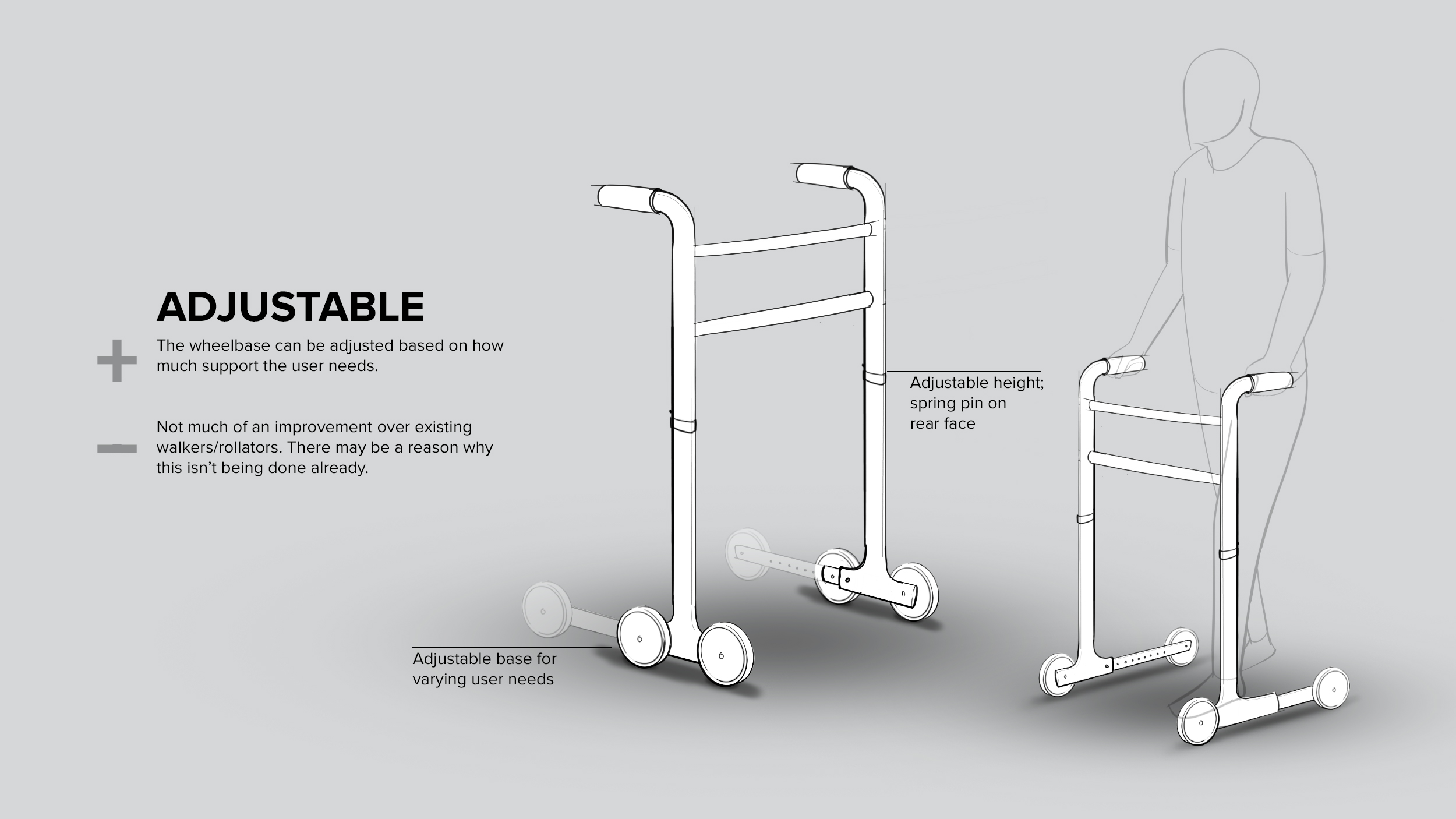
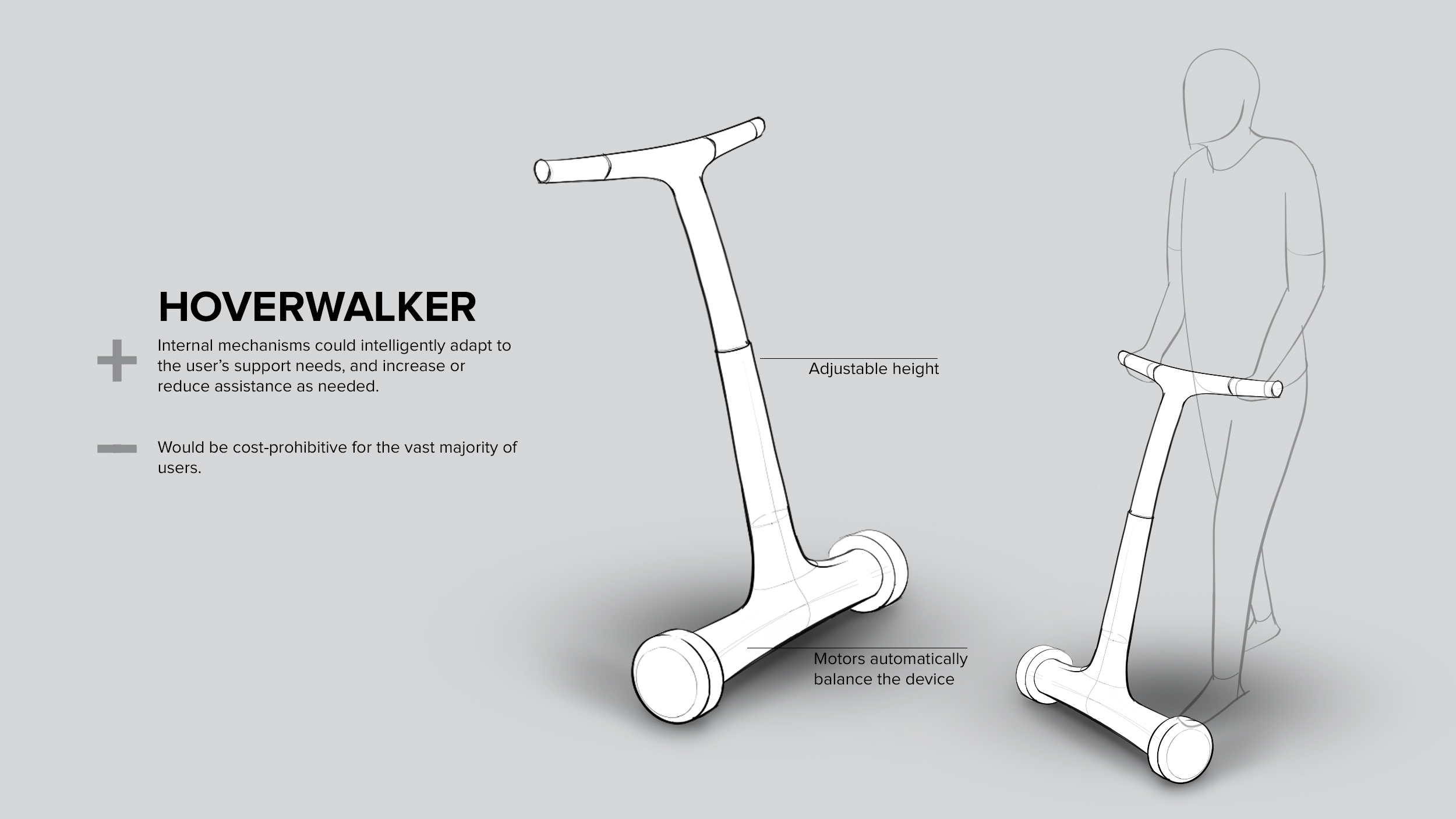
iterative Prototyping
The “Hinge” idea was selected by a physical therapist with over 20 years of experience working with seniors. She liked the idea of a walker that “moves with you,” and thought it would be a good next step for her walker patients.
“I would prescribe this for any walker patient.”
—Mary Pat, Geriatric Physical Therapist for 20+ years
PROOF OF CONCEPT
The Big Picture
If TwoStep was being developed for production, extensive engineering, testing, and design revisions would be required. The final product could end up looking very different from what you see here. If nothing else, this concept is a way to call attention to the Mobility Gap, an issue that will become more and more prevalent as the senior population grows.














